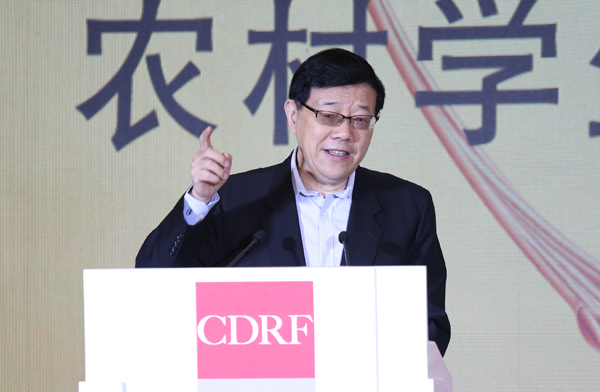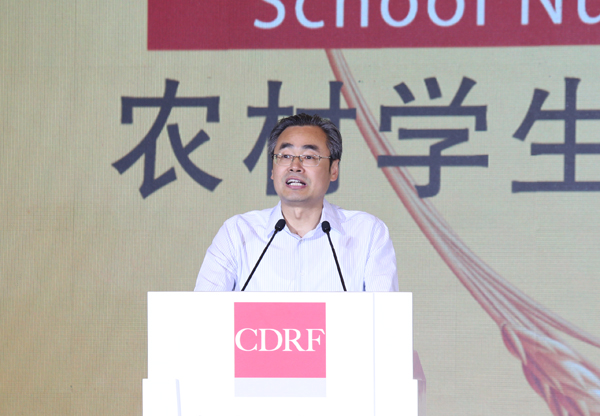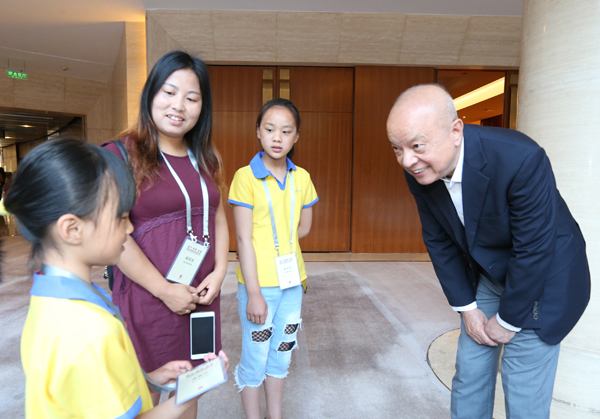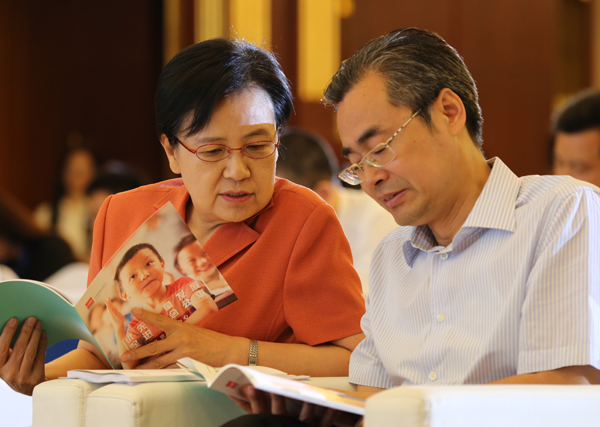School Nutrition Improvement Initiative Symposium Held in Beijing
School Nutrition Improvement Initiative Symposium was held in Beijing on June 1. This event was co-organized by China Development Research Foundation and China International Development Knowledge Center.

The nutrition improvement program for students during compulsory education stage in rural areas launched by the State Council in 2011 now covers 699 poverty stricken rural counties. To date, the central government has allocated 159.1 billion yuan, benefiting 21.3 million students during compulsory education stage every day. As the program reaches its fifth year, the seminar seeks to summarize and advocate its achievements, discuss future development and carrying out international communication and cooperation.

Li Wei, President of Development Research Center of the State Council, Lu Xin, Vice Minister of Central Office of the Coordination Work Group in Xinjiang, Zheng Fuzhi, member of the party leadership group of Ministry of Education, Chen Mingming, Deputy Governor of Guizhou, Lu Mai, Vice Chairman and Secretary-General of China Development Research Foundation, and Liu Xin’an, Deputy Director General of Department of Science and Education of Ministry of Finance delivered speeches at the opening ceremony. The President of National Fund for the Development of Education Silvio Pinheiro, and the Member of Expert Panel of Copenhagen Consensus Center Susan Horton delivered a speech at the seminar.



As a public welfare project promoting fairness in education and breaking the cycle of poverty, the implementation of the nutrition improvement program is supported and supervised by professionals from many sectors. During the seminar, government officials at home and abroad, scholars, journalists, entrepreneurs and nonprofit operators discussed issues in poverty eradication and the nutrition improvement program, child nutrition and poverty alleviation in education, media assistance, investment in child nutrition improvement, ensure the sustainable operations of the nutrition improvement program and international experiences on child development.

During the seminar, attendants listened to tales told by students benefited from the program. Actor Angelababy (Yang Ying) was appointed as the child development ambassador of China Development Research Foundation.

The implementation of the nutrition improvement program for students in rural areas is the result of dedicated effort from school faculty, teachers and staffs in 699 pilot counties. 20 pilot counties of the nutrition improvement program received the “Outstanding County in Sunshine School Meal Project" Certificate of Honor awarded by China Development Research Foundation. Representatives from Ningxia, Guizhou, Shanxi, etc. were invited to deliver a speech, exchange ideas, promote the experience of the nutrition improvement program and awarded the outstanding schools in Sunshine School Meal Project.
China Development Research Foundation has continued to conduct social experiments, policy advocacy and policy evaluation on the nutritional condition of rural students in impoverished areas since 2006. The foundation launched School Nutrition Improvement Initiative with National Student Nutrition Office of Ministry of Education in 2015 to carry out the third-party data monitoring and evaluation.
School Nutrition Improvement Initiative’s monitoring covers nearly 4 million students from more than 9200 schools in 100 counties of 13 provinces. More than 10.2 million pieces of data about the implementation of the nutrition improvement program had been collected and analyzed over the past two years.
Lu Mai, the Vice Chairman and Secretary-General of China Development Research Foundation, presented the Report on Nutrition Improvement in Poor Rural Areas at the seminar. According to the data provided by the report, the average height of different age groups of students increased following the implementation of the nutrition improvement program. Students ages 11-15 who have lunch at school for 3-4 years are 5cm taller on average. For example, the average height of male students aged 11 increases 5.7 cm from 137.8 cm to 143.5 cm while the average height of female students aged 11 increases 5.6 cm from 138.7 cm to 144.3 cm in 2012-2016. “The results seemed astonished us at first but we were convinced after confirming repeatedly,” Lu said.




